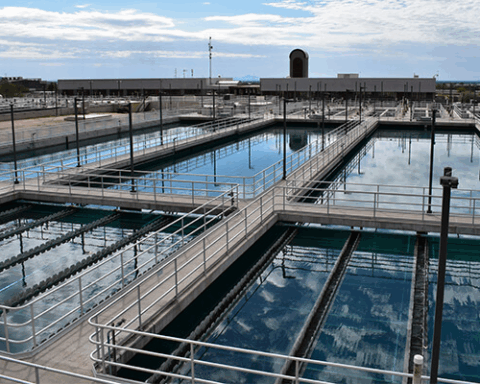In Alaska’s Cook Inlet, which leads from the open ocean to the city of Anchorage, scientists are investigating how tidal energy could provide reliable and renewable electricity to the grid.
A study, published earlier this year by the National Renewable Energy Laboratory finds that Cook Inlet is an ideal location to demonstrate marine energy’s potential to become an important part of the future clean energy mix.
Up to 200 megawatts (MW) of tidal energy capacity could be integrated into Alaska’s Railbelt Electrical Grid without major infrastructure upgrades, the study finds. This could contribute up to 20% of the total electrical load and potentially reduce Alaska’s annual CO2 emissions by more than 20%.
The development of clean, renewable energy sources like tidal power is crucial in the fight against climate change. As global temperatures continue to rise due to greenhouse gas emissions, the need for alternatives to fossil fuels becomes increasingly urgent. Tidal energy offers a predictable and reliable source of clean power that could play a significant role in reducing carbon emissions and mitigating the worst effects of climate change.
“The purpose of this study was to identify whether tidal could be an opportunity for the Railbelt—and the results show that tidal energy could, indeed, supply a significant portion of the Railbelt’s electrical demand,” the report states, adding that further analysis is needed to determine the feasibility of a tidal energy project.
The study points to the need to upgrade the transmission infrastructure that transports power from where it is generated to where it is used. While the area could theoretically generate over 18,000 MW of power, current transmission limits practical deployment to about 200 MW. Researchers found that doubling the capacity of the key transmission line, known as the Kenai Intertie, could significantly boost tidal energy’s contribution.
Alaska’s unique geography makes it an ideal testing ground for tidal energy. The Cook Inlet contains some of the largest tidal energy resources in the world, with approximately one-third of the United States’ tidal energy resource estimated to be in this region. The technical resource potential of Cook Inlet is estimated at 80 terawatt-hours per year—more than 15 times the current annual electricity consumption of the Railbelt grid. Utilizing the potential for tidal energy could help Alaska’s grid decarbonize by 2035, according to an article from the Department of Energy.
The study also highlights the importance of strategic placement of tidal arrays. “By distributing the tidal array along the inlet and capitalizing on the fact that the tidal currents peak at different times along the inlet, it is possible to increase the capacity of tidal energy that the grid could handle without major transmission upgrades,” the researchers wrote.
However, challenges remain. The study emphasizes that transmission infrastructure upgrades are essential to fully harness the potential of tidal energy, and that while tidal energy is predictable, its variability throughout the day requires careful grid management.
Photo by Beeblebrox













